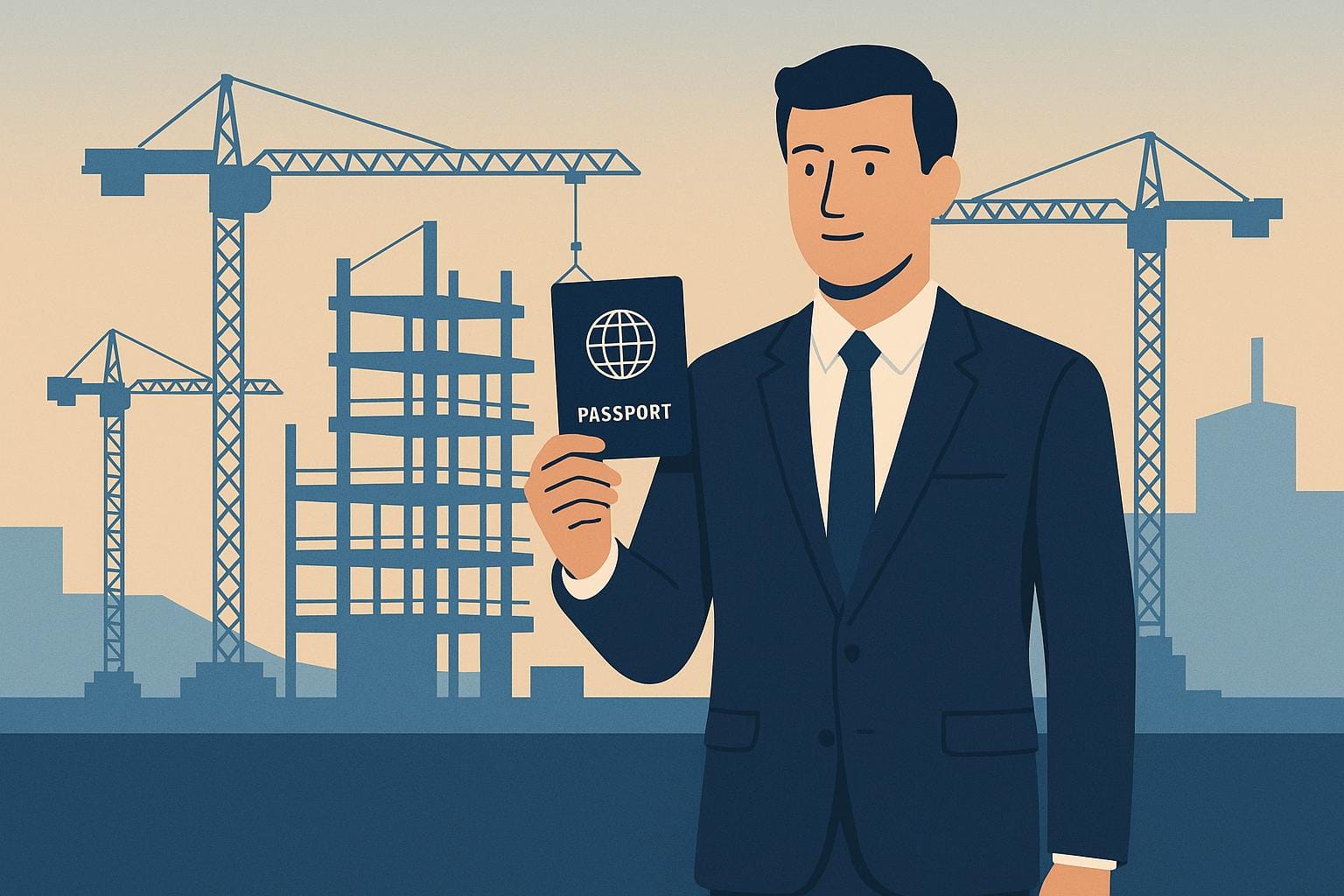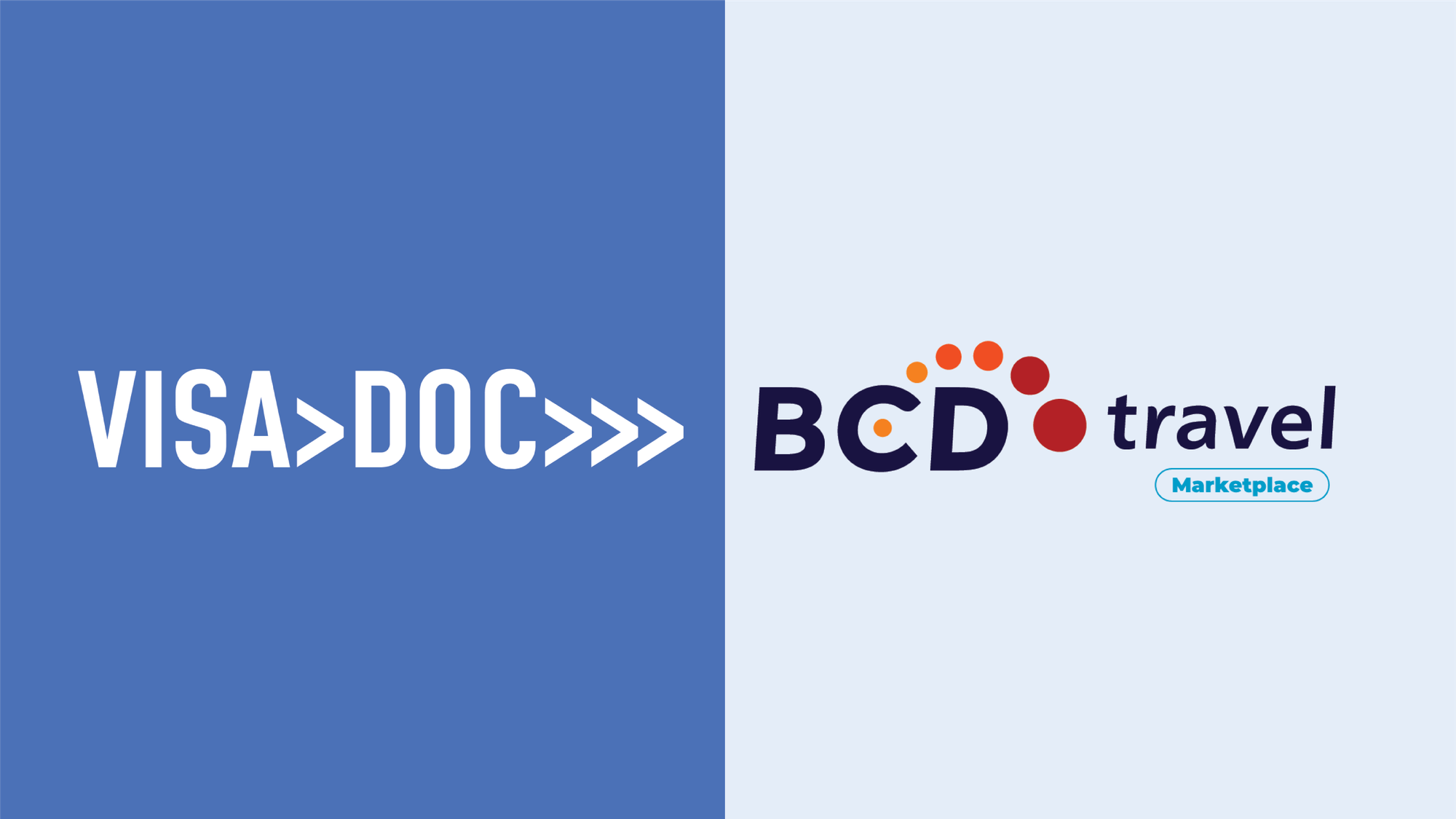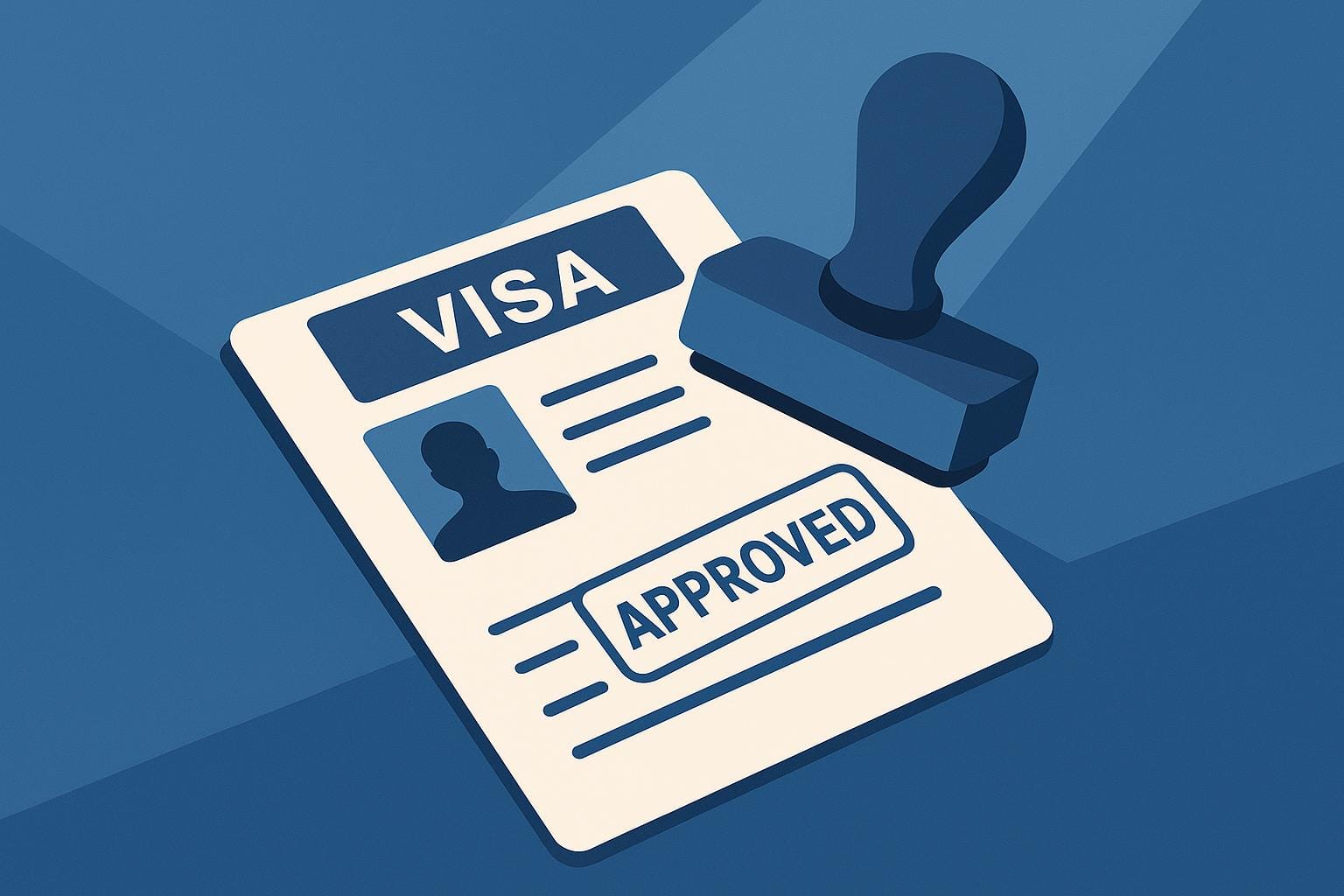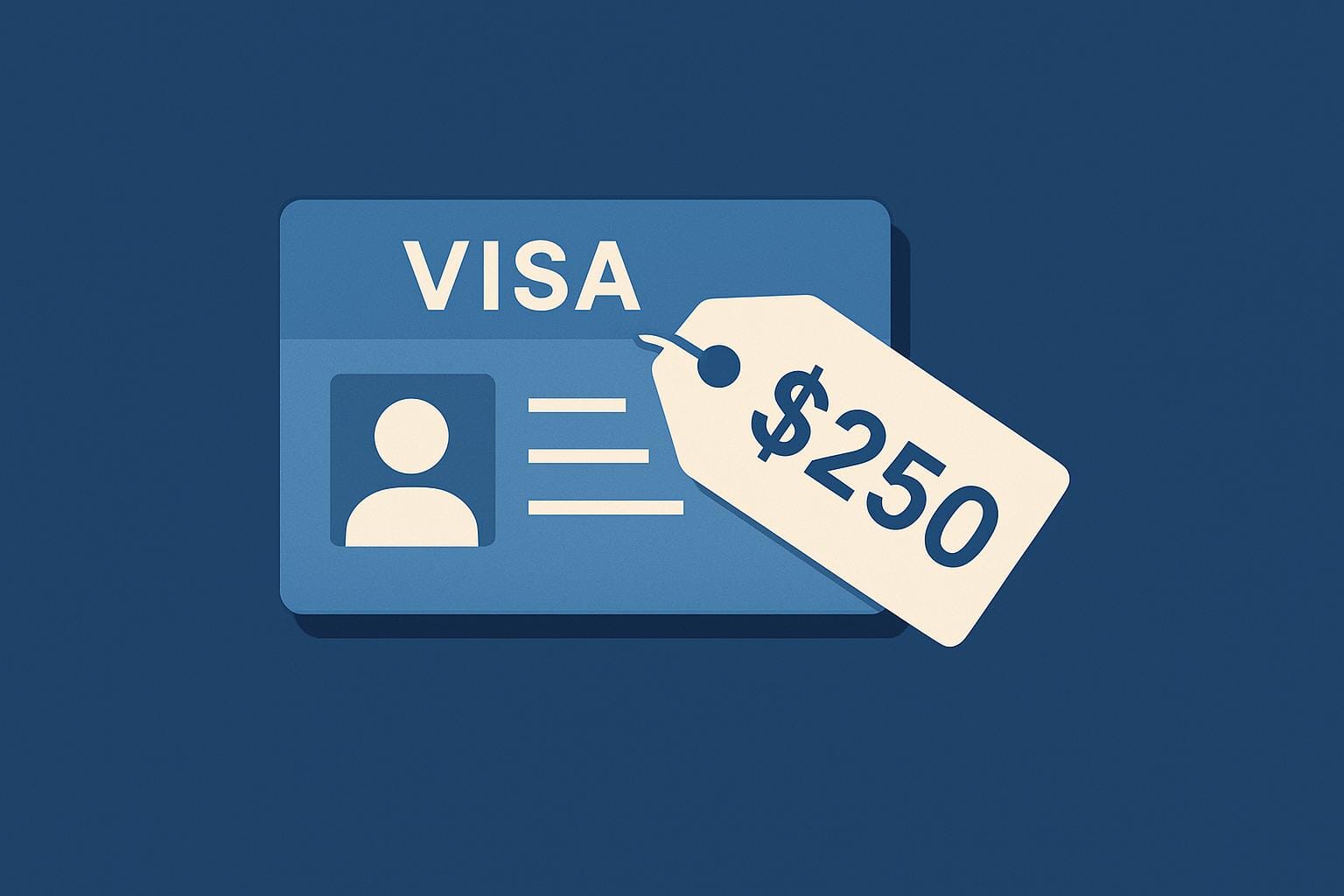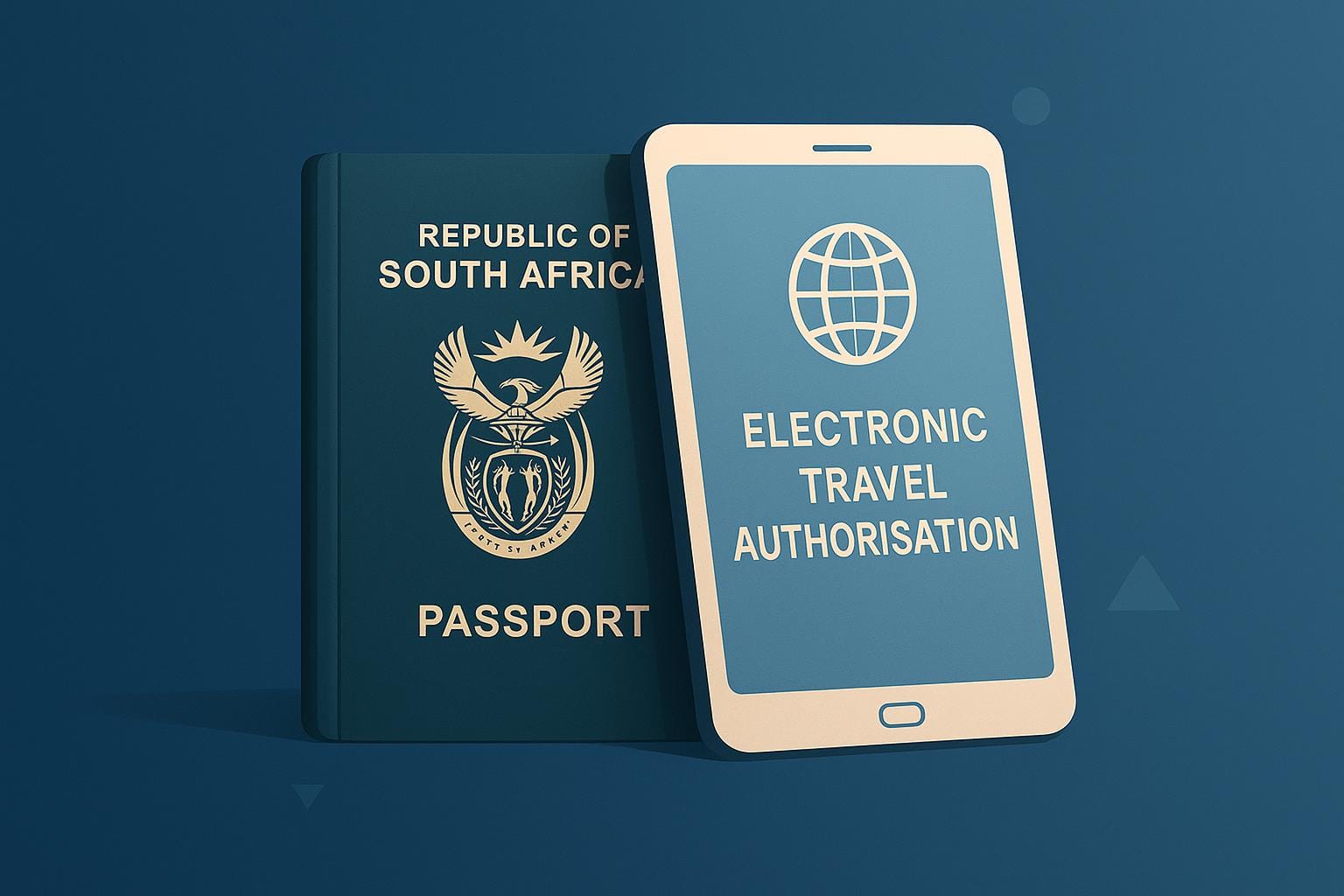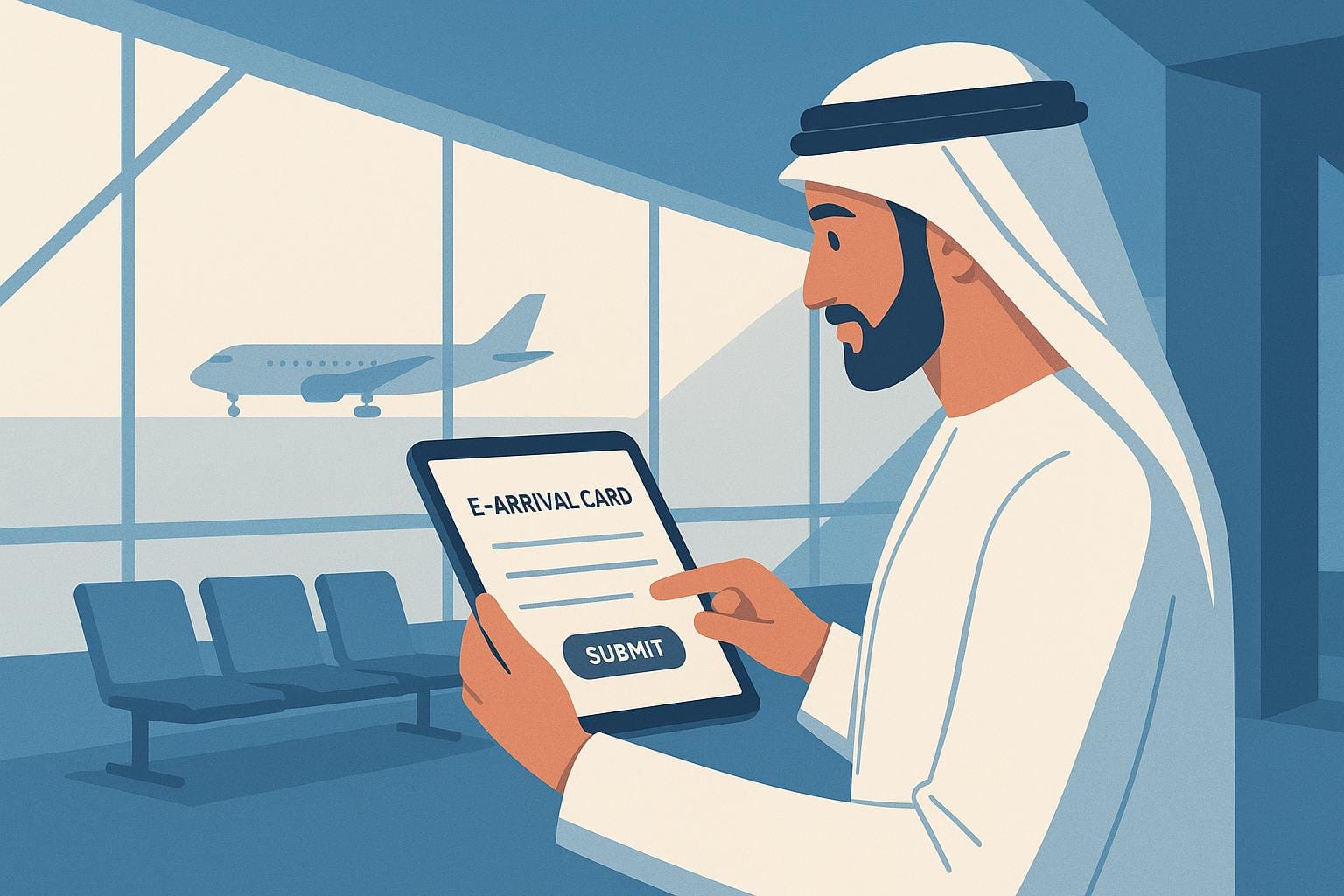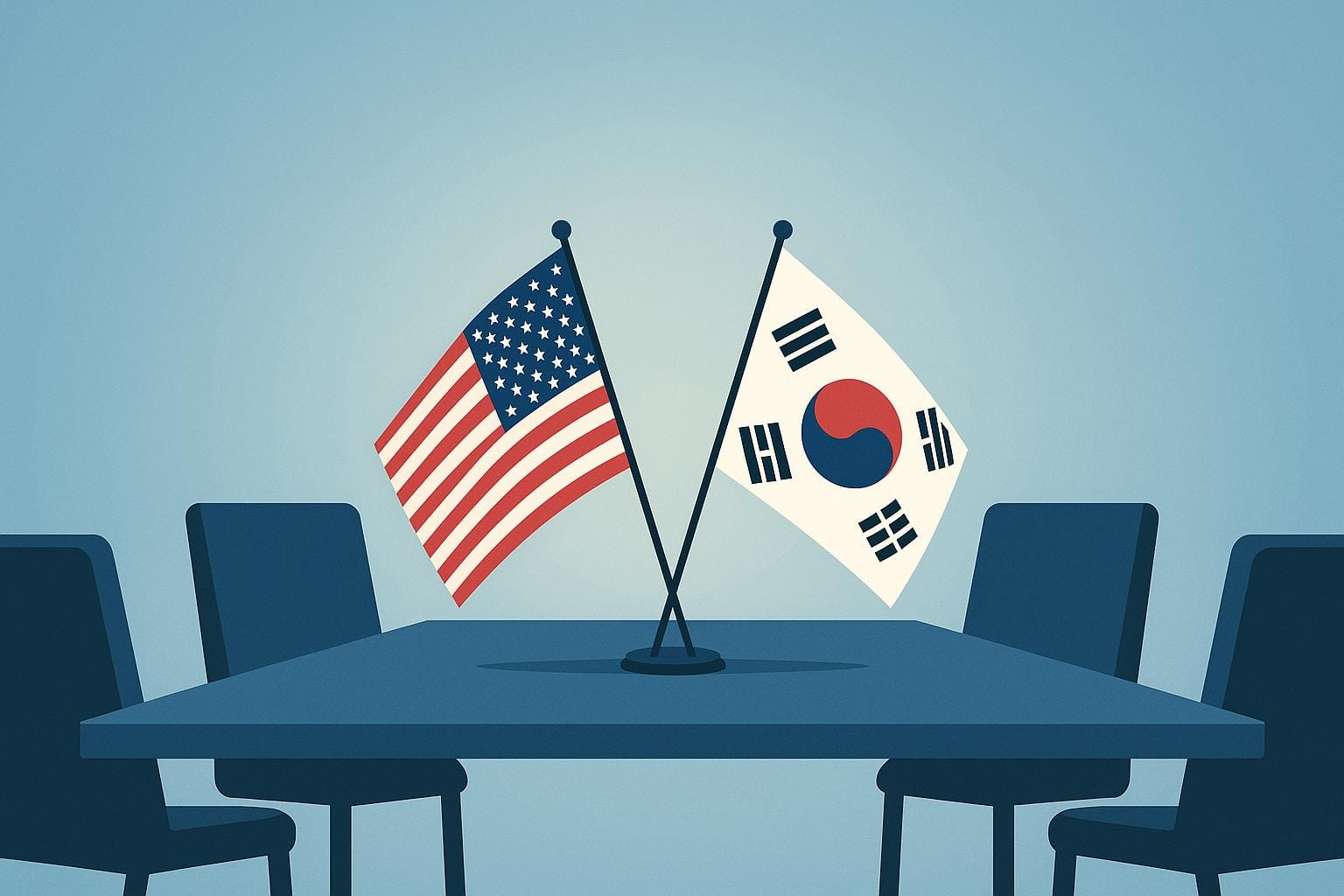Need to visit Egypt for an infrastructure project? Here's what you need to know upfront:
- Purpose: Egypt's short-term business visa allows professionals in construction, engineering, and infrastructure to conduct site visits and project supervision for up to 90 days. For hands-on technical work, a separate Short-Term Work Authorisation (STWA) is required.
- Types:
- Single-entry visa: Valid for 90 days (£62).
- Multiple-entry visa: Valid for 180 days (£87).
- Processing time: Standard embassy applications take 15–30 working days. Emergency digital visa-on-arrival at Cairo International Airport is available for urgent cases.
- Documents needed: Passport (valid for 6+ months), application form, company and invitation letters, proof of accommodation, and travel itinerary.
- Application method: Business visas must be applied through Egyptian consulates, not the e-visa portal. Emergency on-arrival visas are available at Cairo Airport via a digital kiosk system.
Quick Tip: Start applications at least 3–4 weeks in advance to avoid delays. For urgent travel, consider the digital visa-on-arrival system.
Eligibility Requirements and Required Documents
Understanding the eligibility criteria and necessary documents for Egypt's business visa can save you time and effort. Requirements depend on your nationality and the specific role you play in infrastructure projects.
Who Can Apply for the Business Visa
Egypt's short-term business visa is designed for professionals involved in business-related activities like attending or hosting meetings. This includes engineers, project managers, consultants, and technical specialists who need to conduct site inspections, oversee construction phases, or explore business opportunities in Egypt’s infrastructure sector.
However, if your role involves hands-on technical work, you’ll need a short-term work authorisation from the Ministry of Manpower (MOM).
The MOM offers a Short-Term Work Authorisation (STWA), allowing foreign nationals to perform hands-on tasks for up to 90 days. Approval is granted on a case-by-case basis and is particularly relevant for professionals conducting technical inspections, equipment testing, or supervising construction activities.
It’s strongly recommended to secure STWA approval before entering Egypt, even if your passport allows for a visa-on-arrival. This ensures compliance with Egyptian labour laws and avoids complications at the border.
Complete Documentation Checklist
The documents required for a business visa vary based on your nationality. Below is a breakdown of what you’ll need:
General Requirements for All Applicants:
- A completed visa application form with a recent photo
- Two 2″ x 2″ passport photos
- Original passport (valid for at least six months beyond your stay) and two copies of the information page
- Two copies of a letter from your company detailing the purpose of the trip and providing financial guarantees
- Two copies of an invitation letter from the company or organisation in Egypt
- Proof of accommodation in Egypt
- A copy of your driver’s licence
Additional Requirements for Non-American Passport Holders:
- Two copies of a green card (front and back) or work visa with an employment verification letter, or a student visa with a school verification letter
- Two copies of a round-trip ticket or confirmed travel itinerary
For American Passport Holders:
- A copy of a round-trip ticket
Important Notes for Business Visas:
The company letter is key for applications related to infrastructure projects. It should detail the project activities, duration of your stay, and confirm the company’s financial responsibility for your trip.
If you’re applying from a country requiring pre-approval, you’ll also need two copies of your green card, a copy of your driver’s licence, and additional supporting documents.
Single-Entry vs Multiple-Entry Visas
Once you’ve gathered the required documents, you’ll need to decide between a single-entry or multiple-entry visa, depending on your project needs.
- Single-entry visas: Valid for 90 days, ideal for professionals conducting one-time visits for site assessments or short-term evaluations.
- Multiple-entry visas: Valid for 180 days, allowing up to 30 continuous days per visit. This option is perfect for project managers or consultants who need to make regular trips throughout various project phases.
Visa fees are £62 for single-entry and £87 for multiple-entry, with some variations for UK, Canadian, Zimbabwean, and Nigerian passport holders.
The standard processing time for visa applications is 10 business days. Incomplete or missing documents will result in application dismissal, so thorough preparation is essential to avoid delays that could disrupt project schedules.
How to Apply: Step-by-Step Process
If you're planning to apply for a business visa to Egypt, it’s essential to understand the available options and choose the one that aligns best with your project schedule. Here's a breakdown of the process:
Standard Online Application
While Egypt's e-visa portal (www.visa2egypt.gov.eg) is limited to tourist visas, business visas must be obtained through Egyptian consulates using traditional methods. The process involves a few critical steps:
- Identify the Correct Consulate: Determine which consulate serves your area of residence. For instance, the Egyptian Consulate in Washington, D.C., handles visa applications for residents of Delaware, Florida, Georgia, Maryland, North Carolina, South Carolina, Virginia, Washington, D.C., and West Virginia.
- Complete the Application Form: Download the business visa application form from the consulate's website and fill it out carefully.
- Prepare Documentation: Gather all required documents, including your passport, photographs, company letters, and travel itinerary.
- Pre-Approval for Certain Nationalities: Depending on your nationality, pre-approval might be necessary before submitting the full application. This stage alone can take 6–8 weeks, so plan accordingly.
- Submit Your Application: Applications can be submitted either in person or by mail, but make sure to follow the specific instructions provided by your consulate.
One important note: Avoid making travel arrangements until your visa is approved. For urgent situations, consider the emergency visa-on-arrival option discussed below.
Emergency Visa-On-Arrival Option
Introduced in June 2025, Egypt’s digital emergency visa-on-arrival system at Cairo International Airport is designed for urgent cases. This system is particularly useful for professionals needing immediate entry for critical infrastructure projects.
- How It Works: The process uses self-service kiosks and a mobile app, enabling you to upload documents, complete your application, and pay fees electronically before or during your journey.
- QR Code Confirmation: Once your application is processed, you’ll receive a QR code to verify your visa and expedite the immigration process.
- Support Available: Airport staff are on hand to assist with technical issues or for those unfamiliar with the system.
- Payment Options: Multiple electronic payment methods are accepted, making the process convenient for international travellers.
Currently, this system is only available at Cairo International Airport, but there are plans to expand it to other major airports. It’s a faster alternative to traditional visa-on-arrival queues, particularly during urgent situations.
Processing Times and When to Apply
Your choice of application method should depend on your project’s timeline. Here's what to consider:
- Traditional Embassy Processing: This typically takes 15–30 working days. To avoid delays, apply at least three weeks before your travel date. For complex cases or during peak travel seasons, it’s safer to apply a month in advance.
- Pre-Approval Cases: If pre-approval is required for your nationality, the initial stage alone takes 6–8 weeks. In such cases, start the process at least three months before your planned visit.
- Emergency Visa-On-Arrival: Processing times at Cairo International Airport range from a few minutes to over an hour, depending on queue lengths and system efficiency.
Keep in mind that Egypt hosted 15.7 million visitors in 2024, with plans to attract 30 million annually by 2028. This rising number of travellers can affect processing times, especially during peak seasons.
To avoid disruptions to your project, ensure your documents are complete and choose the application method that best aligns with your schedule. Traditional embassy processing works well for flexible timelines, while the digital visa-on-arrival system is ideal for urgent situations.
Compliance and HR Workflow Automation
Handling business visas for infrastructure projects in Egypt requires strict attention to compliance and operational efficiency to prevent delays. HR teams are under increasing pressure to ensure legal requirements are met while avoiding costly disruptions to project timelines.
Employer Compliance Requirements
Employers must adhere to stringent legal standards when sending employees to Egypt. For starters, every traveller's passport needs to be valid for at least six months beyond their intended departure date.
But compliance doesn’t stop at basic travel documentation. Employers must also compile all necessary business-related paperwork and maintain detailed audit trails for every visa application. The Egyptian government requires employers to justify hiring foreign workers by proving that no local Egyptian candidates can meet the job's requirements. This means HR teams must prepare thorough job descriptions and qualification statements for each employee.
Work permits add another layer of complexity. For example, U.S. citizens travelling on tourist visas are not allowed to work in Egypt. This makes securing the correct business visa essential before arrival. Failing to do so can lead to fines, penalties, and delays that may jeopardise infrastructure projects.
HR teams must also prepare employees to clearly explain the purpose of their visit and confirm their intention to leave Egypt once their work is complete. Reviewing application forms alongside supporting documents is crucial to avoid mismatches that could lead to rejections.
Given these challenges, automation tools can provide a much-needed solution.
Using VisaDoc to Manage Visa Workflows
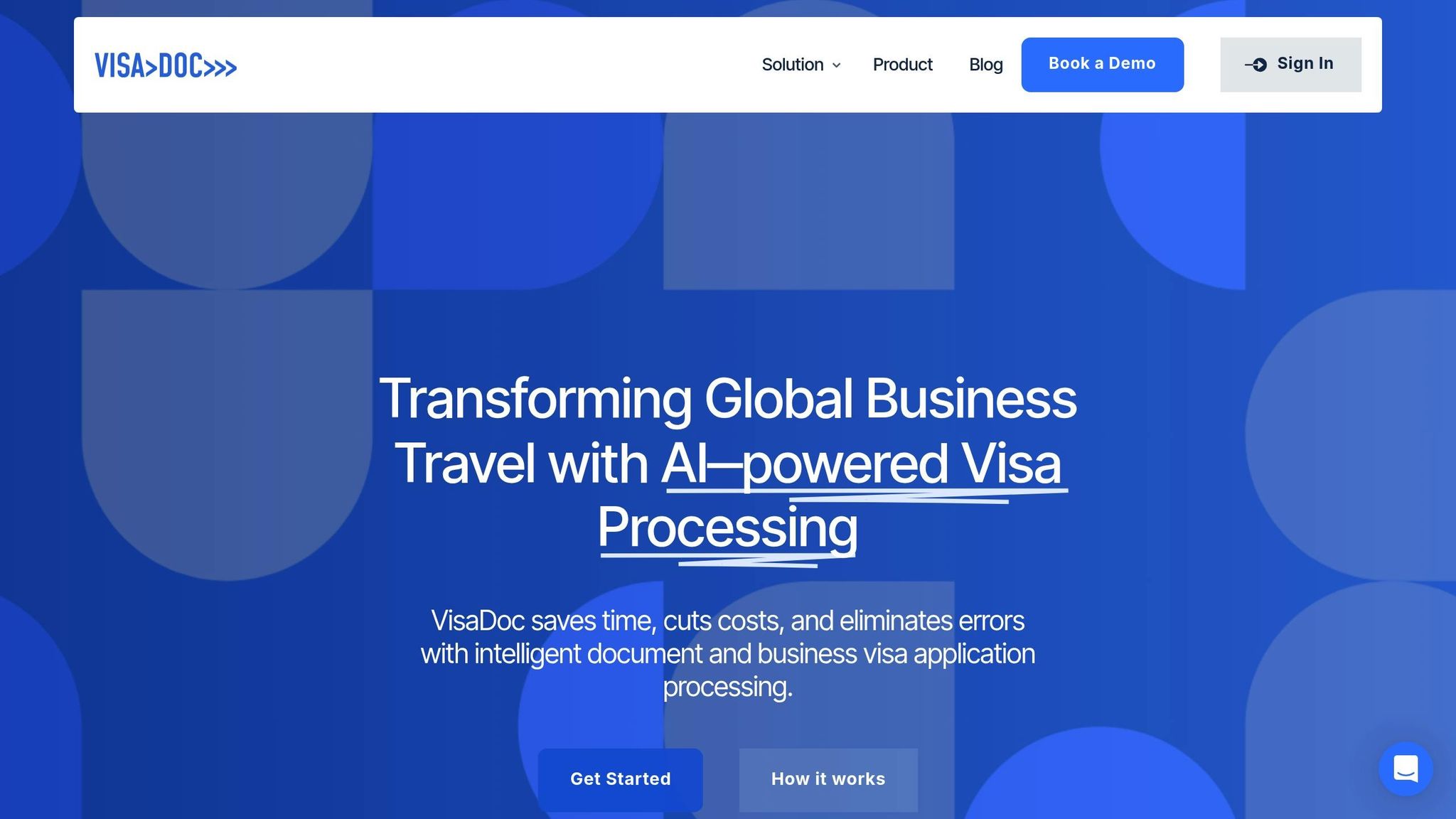
VisaDoc’s cloud-based platform simplifies the complexities of managing Egyptian business visas. Its intelligent document management system automates the collection, verification, and storage of documents, complete with version control. This eliminates the need for manual tracking, which often leads to compliance issues.
The platform’s AI engine stays updated with the latest Egyptian visa regulations, ensuring all applications meet current standards. This feature is particularly useful given the frequent changes in Egypt’s visa policies.
VisaDoc also offers a secure client portal where applicants can upload documents, fill out questionnaires, and monitor their application status in real time. This self-service feature reduces the administrative burden on HR teams while keeping employees informed. By pre-validating business activities and travel histories before submission, the platform significantly lowers compliance risks and minimises the chances of rejection.
With a 98% approval rate for business visa applications, VisaDoc has proven its effectiveness in navigating complex visa requirements. Built-in audit trails, deadline reminders, and status trackers ensure that applications are submitted on time and meet the required documentation standards.
Additionally, VisaDoc integrates seamlessly with tools like Microsoft Office and identity verification systems, streamlining existing HR workflows. Custom workflows tailored to different visa types ensure consistency across the organisation, which is especially valuable for companies managing multiple infrastructure projects simultaneously.
These automated features stand in stark contrast to the inefficiencies of manual processes.
Manual vs Automated Workflows Comparison
The difference between manual and automated visa management is clear when comparing error rates and efficiency. Manual processes often result in human error rates ranging from 18% to 40%, particularly when data is entered manually. For time-sensitive infrastructure projects, these errors can cause serious delays.
Here’s a closer look at how the two approaches stack up:
| Process Area | Manual Approach | Automated Approach |
|---|---|---|
| Data Collection | Relies entirely on human effort for gathering, inputting, and verifying data | Automates data collection and aggregation, reducing the need for manual input |
| Document Organisation | Data stored in scattered systems, causing inefficiencies | Centralised platform consolidates data for easier organisation and access |
| Compliance Tracking | Manual assessments prone to errors and inconsistencies | Automated risk scoring and categorisation ensure consistent compliance |
| Status Updates | Depends on manual reminders, often leading to missed deadlines | Automated notifications ensure timely follow-ups and actions |
| Audit Trail | Limited tracking of changes through manual methods | Automatically logs all actions with timestamps for a complete audit trail |
Manual workflows consume 22% of HR time on repetitive tasks. Even worse, employees spend 60% of their time duplicating efforts in manual processes. For organisations juggling several infrastructure projects, these inefficiencies can quickly escalate.
Shockingly, 61% of automation opportunities remain untapped, representing a huge chance for improvement in visa management workflows. Automated systems, like VisaDoc, offer real-time risk reports and dashboards, enabling proactive compliance management before issues arise.
The financial impact of manual processes is also significant. Without clear connectivity and visibility, it becomes harder to manage risks effectively. This reactive approach often leads to missed deadlines, rejected applications, and delayed projects, all of which can harm an organisation’s reputation and bottom line.
Best Practices for Infrastructure Project Visas
Handling business visas for Egyptian infrastructure projects involves careful planning and attention to detail. By following effective strategies, HR teams can avoid unnecessary delays, keep projects on schedule, and ensure compliance with local regulations.
Planning Travel and Meeting Deadlines
Start visa applications at least three to four weeks before travel to account for processing time variations, especially during busy periods.
Match visa validity with the project's timeline. For instance, single-entry visas typically allow a 90-day validity period with a 30-day stay, while multiple-entry visas provide 180 days of validity. Traditional business visas also offer 180-day validity, with stays ranging from 30 to 90 days. Cost considerations matter too: for teams making frequent visits, multiple-entry visas may prove to be the more economical choice after currency conversion.
Synchronise visa applications with project milestones to ensure approvals are received on time. These practices complement earlier recommendations on compliance and workflow automation.
Keeping Accurate Compliance Records
Accurate record-keeping is essential. Egyptian authorities require thorough documentation to justify the presence of foreign workers, including proof that no suitable local candidates are available. HR teams should maintain detailed records of each visit's purpose, focusing on specific infrastructure objectives rather than vague descriptions.
Ensure all supporting documents are kept up to date. This includes project specifications, site access requirements, and safety certifications. Additionally, monitor passport validity closely, ensuring each passport is valid for at least six months beyond the planned departure date.
For traditional visa applications, be ready for possible interviews by providing clear evidence of your intention to leave Egypt after the visit. Examples include proof of ongoing employment or other commitments in the UK. These records complement the automated tracking systems discussed earlier.
Measuring Workflow Performance
Keep an eye on processing times for different visa types by comparing actual durations to published timelines. For instance, e-visas processed within the expected 48 hours signal a smooth workflow, while delays could point to documentation issues or seasonal backlogs. Regularly reviewing these timelines can help fine-tune the application process and improve overall efficiency.
Conclusion
Managing business visas for Egyptian infrastructure projects involves a clear understanding of visa requirements, selecting the appropriate visa type, and creating workflows that minimise delays while ensuring compliance with regulations.
Automation plays a key role in improving efficiency. In fact, 73% of finance professionals report increased productivity through automation. This is especially crucial for infrastructure projects where time is of the essence. Platforms like VisaDoc demonstrate how automation can transform visa management. With features such as compliance alerts and deadline reminders, organisations can meet the strict documentation standards required by Egyptian authorities while reducing the burden on administrative teams.
Cost considerations are straightforward too. Single-entry visas are priced at £25, while multiple-entry visas cost £60. By adopting automated workflows, businesses can avoid costly processing delays, ensuring better control over budgets and timelines.
The importance of precision in visa management cannot be overstated. As Lord Sonny Leong aptly puts it, “Quality over speed”. This principle underscores the need for careful planning and the right tools to balance compliance with efficiency. For HR teams, this means leveraging automation to ensure projects stay on track.
For companies aiming to capitalise on Egypt's infrastructure opportunities, investing in effective visa workflow management is not just a necessity - it’s a strategic move to stay ahead in this competitive market.
FAQs
What is the difference between Egypt’s Short-Term Business Visa and Short-Term Work Authorisation (STWA), and when should you apply for each?
The Short-Term Business Visa for Egypt is tailored for professionals visiting the country to attend meetings, observe operations, or carry out technical evaluations - without engaging in any form of direct employment or physical labour. On the other hand, the Short-Term Work Authorisation (STWA) is mandatory for foreign workers who need to perform hands-on tasks or technical duties on-site for a temporary period.
Essentially, if your visit involves observation or consultation, the business visa is the right choice. However, if your activities require you to actively work or handle technical operations, you'll need the STWA. The decision hinges entirely on the specific nature of your planned activities.
What steps should professionals take to meet the eligibility requirements for Egypt’s business visa for infrastructure site visits?
To qualify for Egypt’s business visa, professionals need to gather the following essential documents:
- Invitation letter from an Egyptian business entity explaining the purpose of the visit.
- Completed visa application form with precise and accurate details.
- Two recent passport-sized photographs that meet the required specifications.
- Valid passport with a minimum of six months’ validity remaining.
- Proof of accommodation, such as a hotel reservation or confirmation of other lodging arrangements.
In some cases, applicants might also need to provide proof of financial stability, relevant business-related documents, and a clear explanation of their visit's purpose - whether it's for meetings, site visits, or other professional engagements. Double-checking that all paperwork is accurate and complete can make the application process smoother and increase the likelihood of approval.
What should I do if I need to travel urgently to Egypt for an infrastructure project, and how does the emergency visa-on-arrival system work?
If you're heading to Egypt urgently for an infrastructure project, the emergency visa-on-arrival system at Cairo Airport has got you covered. Introduced in mid-2025, this system lets travellers secure a visa swiftly through digital kiosks or a mobile app.
Here's how it works: provide the required documents, pay the visa fee (cash or electronic payments are accepted, with US dollars being the preferred currency), and follow the instructions to generate a QR code for immigration clearance.
This hassle-free system is designed to save time and make entry more efficient - perfect for those on tight schedules. Just make sure you have all the necessary paperwork ready to avoid any hold-ups at immigration.
Related Blog Posts
- India Business Travel Guide: Visas, Permits, and Cultural Tips for Success
- Business Visa Processing Times: Country-by-Country Guide
- Saudi Arabian Temporary Business Visa for Oil & Gas Sector Meetings: Sector-Specific Requirements
- Morocco Business Exploration Visa: Short-Term Entry for Site Selection Teams



